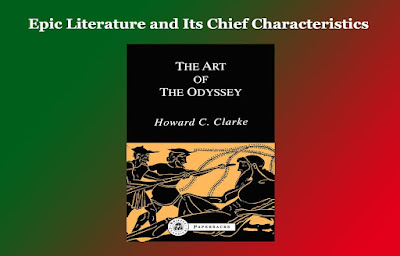Birth and Development of Assamese Literature
Birth and Development of Assamese Literature
Birth and Development of Assamese Literature
Introduction to Birth and Development of Assamese Literature:
Assamese literature, with its rich tapestry of cultural diversity and historical depth, has a fascinating journey that spans centuries. Rooted in the northeastern state of Assam in India, the literary tradition of Assamese language has evolved through various phases, influenced by the socio-cultural dynamics of the region. This article aims to explore the birth and development of Assamese literature, tracing its origins, milestones, and the diverse genres that have contributed to its flourishing legacy.
Ancient Roots:
The earliest traces of Assamese literature can be found in the ancient Sanskrit texts that permeated the region. The Kamarupa Kingdom, which included parts of present-day Assam, was a hub of cultural exchange, and Sanskrit played a pivotal role in shaping early Assamese literary expressions.
The Bhakti Movement:
The 15th and 16th centuries witnessed the influence of the Bhakti movement in Assam, giving rise to a surge in devotional literature. Srimanta Sankardev, a polymath and a key figure of the Bhakti movement, composed devotional songs (Borgeets), dramas (Ankia Naat), and created the Sattras (monastic institutions) that became centers for cultural and literary activities.
The Medieval Period:
The medieval period saw the emergence of the Buranji tradition, which chronicled historical events in prose. These historical chronicles played a crucial role in preserving the collective memory of the Assamese people.
The Vaishnavite Literature:
The Vaishnavite movement, spearheaded by Srimanta Sankardev and his disciple Madhavdev, significantly contributed to Assamese literature. The Borgeets and the Bhakti poetry composed during this period reflect a synthesis of spiritual fervor and artistic expression.
Assamese Poetry:
The 19th and 20th centuries witnessed a surge in Assamese poetry with the works of Lakshminath Bezbaroa, Hemchandra Goswami, and others. These poets explored diverse themes, from nature and love to socio-political issues, leaving an indelible mark on Assamese literature.
Prose and Fiction:
The late 19th century saw the emergence of prose and fiction in Assamese literature. Lakshminath Bezbaroa's "Burhi Aair Sadhu" is considered one of the first Assamese novels, marking a significant milestone in the development of Assamese fiction.
Post-Independence Era:
Post-independence, Assamese literature continued to flourish with the works of iconic figures like Birendra Kumar Bhattacharyya, Navakanta Barua, and Homen Borgohain. Themes expanded to encompass contemporary social issues, reflecting the changing times.
Literary Movements and Modern Trends:
Literary movements like the "Jonaki Era" and the "Axomiya Jatiya Nayak" movement contributed to the modernization and diversification of Assamese literature. Experimental and avant-garde works found a place alongside traditional forms.
Conclusion:
The birth and development of Assamese literature represent a vibrant and dynamic cultural journey. From the roots in ancient Sanskrit traditions to the blossoming of a modern literary landscape, Assamese literature has evolved, reflecting the spirit, ethos, and resilience of the Assamese people. This literary legacy continues to thrive, embracing new voices and narratives that contribute to the rich mosaic of India's diverse literary heritage. 0 0 0.
List of Some Assamese Books:
- অসমীয়া লেখক পৰিচয়
- বিশ্ব ব্যক্তি পৰিচয়
- অসমীয়া ৰচনা শিক্ষা
- অসমীয়া ভাব সম্প্রসাৰণ
- এক গুচ্ছ জীৱনী
- শিশু পদ্য
- অসমীয়া অনুবাদত বিশ্ব চুটি গল্প
- অসমীয়া অনুবাদত বিশ্ব কবিতা
- অসমীয়া অনুবাদত বিদেশী কবিতা
- পৃথিৱীৰ আৰু মোৰ (কাব্য সংকলন)
- সংহতিৰ ভাড়া ঘৰ ( কাব্য সংকলন)
- মোৰ গীত তোমাৰ সুৰ (গীতি কবিতা সংকলন)
- তুমি কেমন প্রেমিক (বাংলা কাব্য সংকলন)
- তোমাকে বলছি (বাংলা কবিতা সংকলন)
- ফণী শৰ্মাৰ নাটক 'চিৰাজ'-এক সমালোচনা
- হীৰেন ভট্টাচাৰ্যৰ কবিতা -এক বিশ্লেষণাত্মক অধ্যয়ন
- ইছমাইল হোছেইনৰ কবিতা : এক বৈশিষ্ট্যমূলক আলোচনা
- ইছমাইল হোছেইনৰ কবিতা: এক বিশ্লেষণাত্মক অধ্যয়
- অসমীয়া উপন্যাস সমালোচনা
- অসমীয়া চুটি গল্প সমালোচনা
- মৌলানা আবুল কালাম আজাদ (চমু জীবনী)
- অসমীয়া কবি প্রতিভা (সাহিত্য সমালোচনা)
- নির্বাচিত অসমীয়া কবিতা সমালোচনা
- অসমীয়া ব্যাকৰণ ক অংশ
- অসমীয়া ব্যাকৰণ খ অংশ
- নির্বাচিত অসমীয়া কবিতাৰ মূলভাব
- আৰবী সাহিত্যৰ ইতিহাস:প্রাক-ইসলামী যুগ (৫০০-৬২২ খৃ:)
- আৰবী সাহিত্যৰ ইতিহাস:প্রাথমিক ইসলামী যুগ (৬২২-৬৬১)...










Comments
Post a Comment
Comment should be honest and suggestive